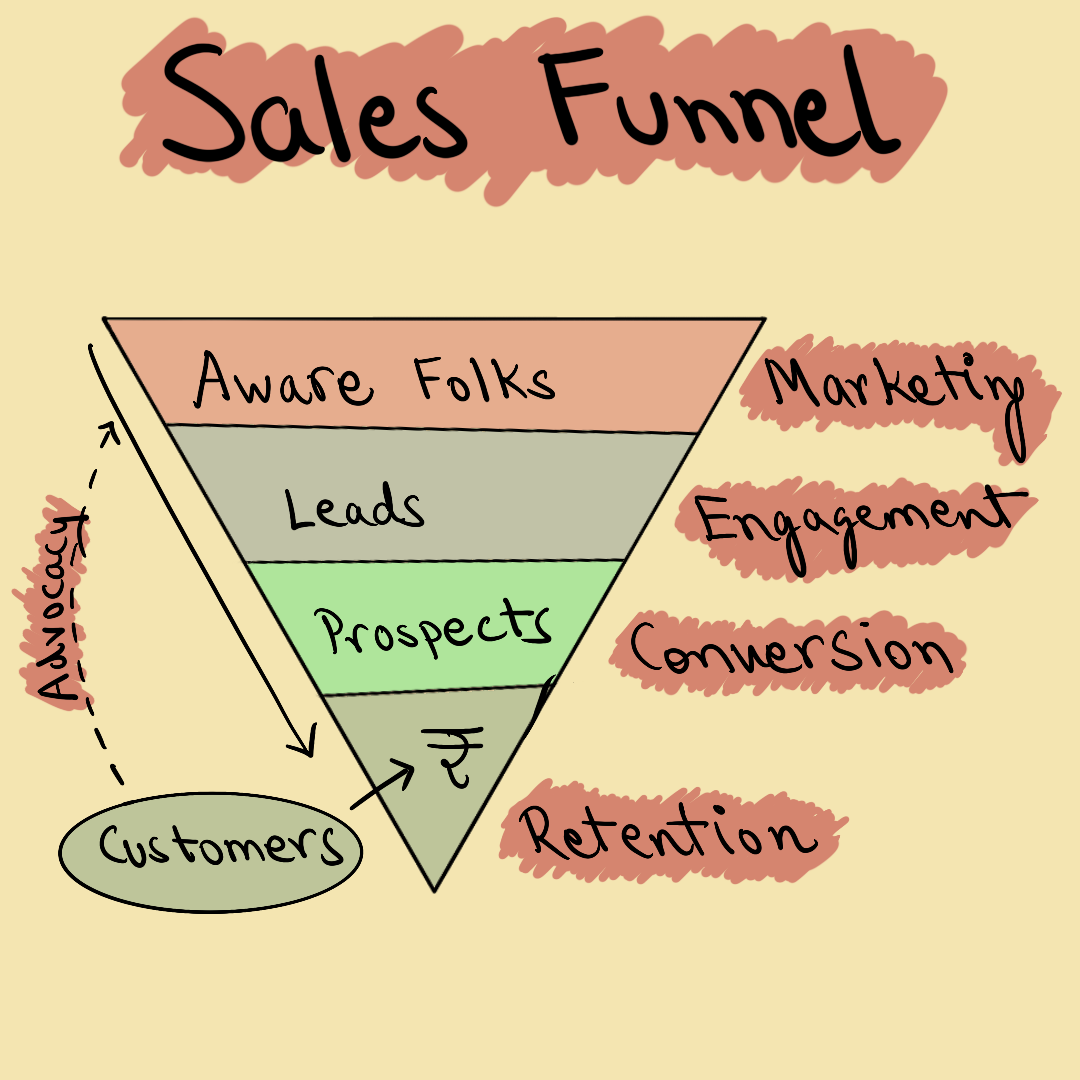Sales Funnel
What is it?
A conceptual framework that represents the journey a potential customer takes from being aware of the product/service to making a purchase.
The “funnel” signifies that not everyone aware of your offerings is going to buy from the business. Hence, it’s wider at the top and narrower at the bottom.

How is it useful?
“You can’t manage what you can’t measure”
Besides providing an intuitive visualisation of the journey of a (potential) customer, one can also identify the areas which are lacking and accordingly work on improving them.
With insights gained from the sales funnel, businesses can optimize their marketing strategies, messaging, and sales processes to improve conversion rates at each step.
Steps of sales funnel
As this is only a framework, different industries tweak it according to the type of business-model, price point, sales cycle etc.
But in general, it can be broken down into 4 steps:
1. Increasing Awareness (Marketing)
Making a potential customer aware is the first step of the sales funnel. Capturing as many prospective customers as possible (at reasonable cost) is the objective. Let’s say “someone” is running an e-commerce business, then (that) “someone” can create awareness about the offerings via digital marketing campaigns:
- SEO
- Content Marketing
- Digital Advertising
2. Promoting engagement with the product/service
At this point, leads would show interest in what “someone” offers, so “someone” should have a strategy in place to influence leads to make the offerings look trustworthy and credible. Potential customers would also be evaluating their options, and comparing “someone”’s offerings with competitors, reading reviews, and seeking more information to make an informed decision.
This step relies on building credibility and trust with the potential customers. Businesses focus on generating a positive emotional trigger to influence people to make purchases. It’s generally done using:
- Good landing page
- Videos
- Blogs
- Social Media presence
- Newsletters
3. Making Purchase
Once “someone”’s leads are converted to prospects, they have a strong intention to purchases and would be showing buying signals, like subscribing to the newsletter. engaging with social media page/post, requesting demos, using free-trials, etc. At this stage, the focus should be to convert these prospects into customers, using email marketing, providing incentives, retargeting ads, on-call conversations, etc.
4. Customer Retention
Once the prospect has become the customer, “someone” will need to focus on making their experience so good that the satisfied customers would market the offering service using word-of-mouth. And, it goes without saying that, driving customers for a word-of-mouth marketing should not be the only objective while serving customers. It should be side effect of the entire customer experience, that they like the offering so much that they recommend it to their friends and family too.
In conclusion:
If the sales funnel is properly implemented (with automation) and monitored, it can serve as a predictable sales engine that can grow the business. Businesses closely monitor key metrics such as conversion rates (at each stage), customer acquisition cost, and lifetime value to identify areas of improvement and optimization. Also with time, businesses experiment with different strategies within the funnel and use A/B testing to identify what works best for the customers.